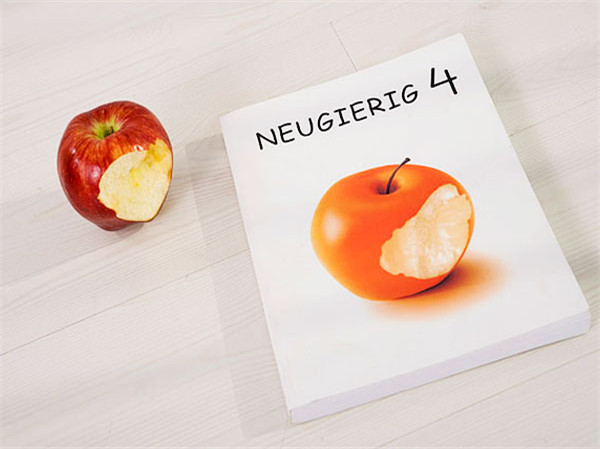现在大家在进行托福备考时官方真题Official托福模考软件相信是大家用的最多的工具了,对于托福成绩的提升是非常有帮助的。托福听力可以说是整个托福考试当中比较重要的一个部分,如何利用现有资料官方真题Official模考软件来提升大家的托福成绩呢?今天小编在这里整理了官方真题Official5托福听力Lecture1文本+题目+答案解析来分享给大家,希望对大家托福听力备考有帮助。

官方真题Official5托福听力Lecture1原文文本
Narrator: Listen to part of a lecture in a sociology class.
Professor: Have you ever heard the one about alligators living in New York sewers? The story goes like this: a family went on vacation in Florida and bought a couple of baby alligators as presents for their children, then returned from vacation to New York, bringing the alligators home with them as pets.
But the alligators would escape and find their way into the New York sewer system where they started reproducing, grew to huge sizes and now strike fear into sewer workers. Have you heard this story? Well, it isn’t true and it never happened. But despite that, the story has been around since the 1930s. Or how about the song ‘twinkle, twinkle little star’, you know, ‘twinkle, twinkle, little star, how I wonder what you are’. Well we’ve all heard this song.
Where am I going with this? Well, both the song and the story are examples of memes. And that’s what we would talk about, the theory of memes. A meme is defined as a piece of information copied from person to person. By this definition, most of what you know, ideas, skills, stories, songs are memes. All the words you know, all the scientific theories you’ve learned, the rules your parents taught you to observe, all are memes that have been passed on from person to person.
So what? You may say. Passing on ideas from one person to another is nothing new. Well, the whole point of defining this familiar process as transmission of memes is so that we can explore its analogy with the transmission of genes. As you know, all living organisms pass on biological information through the genes.
What’s a gene? A gene is a piece of biological information that gets copied or replicated, and the copy or replica is passed on to the new generation. So genes are defined as replicators. Genes are replicators that pass on information about properties and characteristics of organisms. By analogy, memes also get replicated and in the process pass on cultural information from person to person, generation to generation. So memes are also replicators.
To be a successful replicator, there are three key characteristics: longevity, fecundity and fidelity. Let’s take a closer look. First, longevity. A replicator must exist long enough to be able to get copied, and transfer its information. Clearly, the longer a replicator survives, the better its chances of getting its message copied and passed on. So longevity is a key characteristic of a replicator. If you take the alligator story, it can exist for a long time in individual memory, let’s say, my memory. I can tell you the story now or ten years from now, the same with the twinkle, twinkle song. So these memes have longevity because they are memorable for one reason or another.
Next, fecundity. Fecundity is the ability to reproduce in large numbers. For example, the common housefly reproduces by laying several thousand eggs, so each fly gene gets copied thousands of times. Memes, well, they can be reproduced in large numbers as well. How many times have you sung the ‘twinkle, twinkle song’ to someone? Each time you replicated the song, and maybe passed it along to someone who did not know it yet, a small child maybe.
And finally, fidelity. Fidelity means accuracy of the copying process. We know fidelity is an essential principle of genetic transmission. If a copy of a gene is a bit different from the original, that’s called a genetic mutation. And mutations are usually bad news. An organism often cannot survive with a mutated gene. And so a gene usually cannot be passed on, unless it’s an exact copy.
For memes however, fidelity is not always so important. For example, if you tell someone the alligator story I told you today, it probably won’t be word for word exactly as I said it. Still, it will be basically the same story, and the person who hears the story will be able to pass it along. Other memes are replicated with higher fidelity though, like the twinkle, twinkle song.
It had the exact same words 20 years ago as it does now. Well, that’s because we see songs as something that has to be performed accurately each time. If you change a word, the others will usually bring you in line. They’ll say, ‘that’s not how you sing it’, right? So, you can see how looking at pieces of cultural information as replicators, as memes, and analyzing them in terms of longevity, fecundity and fidelity, we can gain some insight about how they spread, persist or change.
查看官方真题Official5托福听力Lecture1的题目请进入下一页→→→
相关推荐
-
【官方真题Official托福阅读】官方真题Official3托福阅读词汇真题练习——pales&significance
2015-11-19![【官方真题Official托福阅读】官方真题Official3托福阅读词汇真题练习——pales&significance]()
-
【托福听力备考】官方真题Official听力高频词汇——文学讲座学科词汇汇总
2015-11-06![【托福听力备考】官方真题Official听力高频词汇——文学讲座学科词汇汇总]()
-
托福到底能考多少分?19年必练真题告诉你答案
APP专享![托福到底能考多少分?19年必练真题告诉你答案]()
-
【官方真题Official托福阅读】官方真题Official3托福阅读词汇真题练习——ensuing&initial
2015-11-19![【官方真题Official托福阅读】官方真题Official3托福阅读词汇真题练习——ensuing&initial]()
-
【官方真题Official托福阅读】官方真题Official3托福阅读词汇真题练习——guarantee&ensure
2015-11-19![【官方真题Official托福阅读】官方真题Official3托福阅读词汇真题练习——guarantee&ensure]()
-
【官方真题Official托福阅读】官方真题Official3托福阅读词汇真题练习——arduous&difficult
2015-11-19![【官方真题Official托福阅读】官方真题Official3托福阅读词汇真题练习——arduous&difficult]()
-
【官方真题Official托福模考】官方真题Official4托福阅读词汇真题练习 adjacent&nearby
2015-12-04![【官方真题Official托福模考】官方真题Official4托福阅读词汇真题练习 adjacent&nearby]()
-
官方真题Official4托福阅读词汇真题练习——rebound&decline
2015-12-04![官方真题Official4托福阅读词汇真题练习——rebound&decline]()
-
【托福阅读备考】官方真题Official1托福阅读词汇真题练习——plugged&washed
2015-11-09![【托福阅读备考】官方真题Official1托福阅读词汇真题练习——plugged&washed]()
-
官方真题Official5托福阅读词汇真题练习——promote&complicate
2015-12-09![官方真题Official5托福阅读词汇真题练习——promote&complicate]()
-
【官方真题Official托福阅读】官方真题Official3托福阅读词汇真题练习——devised&suggested
2015-11-19![【官方真题Official托福阅读】官方真题Official3托福阅读词汇真题练习——devised&suggested]()
-
【官方真题Official托福阅读】官方真题Official3托福阅读词汇真题练习——particular&final
2015-11-19![【官方真题Official托福阅读】官方真题Official3托福阅读词汇真题练习——particular&final]()
-
【官方真题Official托福阅读】官方真题Official3托福阅读词汇真题练习——integral&variable
2015-11-19![【官方真题Official托福阅读】官方真题Official3托福阅读词汇真题练习——integral&variable]()
-
官方真题Official8托福阅读词汇真题练习——disruption&exhaustion
2015-12-18![官方真题Official8托福阅读词汇真题练习——disruption&exhaustion]()
-
【托福阅读备考】官方真题Official1托福阅读词汇真题练习——autonomous&artistic
2015-11-09![【托福阅读备考】官方真题Official1托福阅读词汇真题练习——autonomous&artistic]()
-
【小站推荐】官方原题Official模考软件之考托模考测试题C1
2014-05-04![【小站推荐】官方原题Official模考软件之考托模考测试题C1]()
-
【托福听力备考】官方真题Official听力高频词汇——歌剧讲座学科词汇汇总
2015-11-06![【托福听力备考】官方真题Official听力高频词汇——歌剧讲座学科词汇汇总]()
-
官方真题Official5托福阅读词汇真题练习——afford&offer
2015-12-09![官方真题Official5托福阅读词汇真题练习——afford&offer]()
-
官方真题Official5托福阅读词汇真题练习——overwhelm&powerful
2015-12-09![官方真题Official5托福阅读词汇真题练习——overwhelm&powerful]()
-
【官方原题Official模考软件】小站推荐考托模考测试题B1
2014-05-04![【官方原题Official模考软件】小站推荐考托模考测试题B1]()
-
托福写作批改:[综合+独立][官方真题Official19]高分作文推荐
2015-10-23![托福写作批改:[综合+独立][官方真题Official19]高分作文推荐]()
定制专属课程规划
领取成功
添加助教,定制你的专属课程规划

每日提分任务
专业提分资料
全程督学答疑























![托福写作批改:[综合+独立][官方真题Official19]高分作文推荐](http://www-static.zhan.com/uploadfile/images/auth/crop/13733499.jpg)
